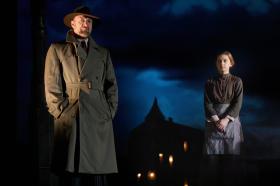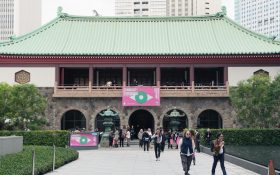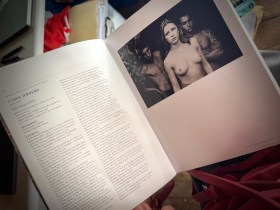It is no surprise that as we get closer to the 450th Anniversary of the birth of William Shakespeare, the Shakespeare Industry is alive and well. In some recent works that use new methodologies to explore history and culture, the search for a satisfying understanding of the life of Elizabethan England’s towering literary figure continues to offer some tantalizing hints about the man whose gifts set the gold standard for literary achievement in English. Three of these works, Will in the World: How Shakespeare Became Shakespeare by Stephen Greenblatt, 1599: A Year in the Life of William Shakespeare, by James Shapiro, and Shakespeare: The Biography, by Peter Ackroyd, are all part of the new approach to the Bard. They are each different, yet all stress the same approach — attention to the cultural surround, and context, context, context.
The New Historicism, as it has been called, insists on placing a literary object under discussion into a larger setting: understanding the times that produced the work — the culture that nurtured it, the books the author read, the politics and economics of the day — enriches our reading of the work itself. Knowing the cultural surround, the zeitgeist, becomes a key to unlocking stories of history that have been lost to us.
This approach might be particularly useful when trying to study the mystery that is William Shakespeare: we have so many words from him; and yet we have relatively little information about the life of the man himself. It has frustrated writers and readers alike for almost 450 years. Shakespeare clearly belongs to the ages, but detectives of history have long wished to know much more about the life of the person who was born in a small town, the son of a man who made gloves and participated in local politics, went to London for a stunning career, became beloved in his own age, and then retired, quietly, to his home town.
In his preface to his lively book, 1599: A Year in the Life of William Shakespeare, James Shapiro tells us, “The Shakespeare who emerges on these pages is less a Shakespeare in Love than a Shakespeare at Work.” And to understand Shakespeare at work, we need to have an understanding of what the Elizabethan world and workplace looked like.
These three books all give us a sense of this, and in doing so shed light on both the world and the workplace, in addition to providing insights into the plays and poems themselves, even as they still leave us wanting to know more.
Stephen Greenblatt pioneered the New Historicism in American letters. Will in the World places Shakespeare into context by giving us the beginnings of a frame for Shakespeare’s palette. It does not define Shakespeare so much as it explores the age in which he lived and worked — and played.
Why do we have such an obsession with Shakespeare’s biography? The legacy he left behind is staggering. Indeed, although we know there were some plays that were lost, more of Shakespeare’s words survive than many of the works of his contemporaries. So we have an enormous body of work, but because we have only fragments from his daily life, the questions about Shakespeare have in themselves spawned many theories and conjecture. Was he a Catholic? Was his father an alcoholic? How did he manage to keep himself out of trouble in the rough and tumble political times of the era? How regularly did he return to Stratford during his most active years? What was his relationship to his wife? Why did he retire from London and the world of theater almost as suddenly as he first burst upon the Elizabethan stage? What was his relationship to his own children? And on, and on.
And then there are the more metaphoric questions: what did he think about in that stuffy upstairs loft of a Grammar School where he first learned history, Latin, and a little Greek? What was the first spark for his creativity? When did he know that his lot was not to make gloves, or be a farmer, or trade in wool, or even be a teacher? When did he know that he was going to transform popular entertainment, planting an early guidepost for exploration of the full range of human consciousness?
Ackroyd’s biography is less a scholarly approach to Shakespeare than a great read. As he has in his earlier work, including his “biography” of the city of London, Ackroyd gives us the sights, sounds, and even the smells of late sixteenth- and early seventeenth-century London. We almost feel we are walking Shakespeare’s streets, moving with him from one temporary lodging to another closer to the new Globe as it rises, and sensing the pulse of a city reacting to the news of the day.
Shapiro focuses on a single year, 1599, a turning-point that vividly gives us a view into what Shakespeare would have been hearing in the streets and taverns, and what else was going on, as the old faith of Catholic England was systematically being replaced by Anglicanism even as recusants (old believers) stubbornly held on to their traditions and customs, and were being ferreted out by the state. He even gives us the cinematic image of actors and writers taking the lumber from their old theater (The Theatre) to the site of the new one about to rise in Southwark (The Globe) under cover of darkness. Shakespeare at work, indeed.
All three of these books are accessible for all readers. Taken together, they make a great whole: filling in the surround, raising questions, demystifying and opening up Shakespeare’s world.
Today’s Globe Theatre is getting ready to celebrate Shakespeare’s birthday weekend in April with “Sonnet walks, Italian delicacies, performance workshops, live music and films projected on to the theatre walls.”
Will, and his world, are at it still.




